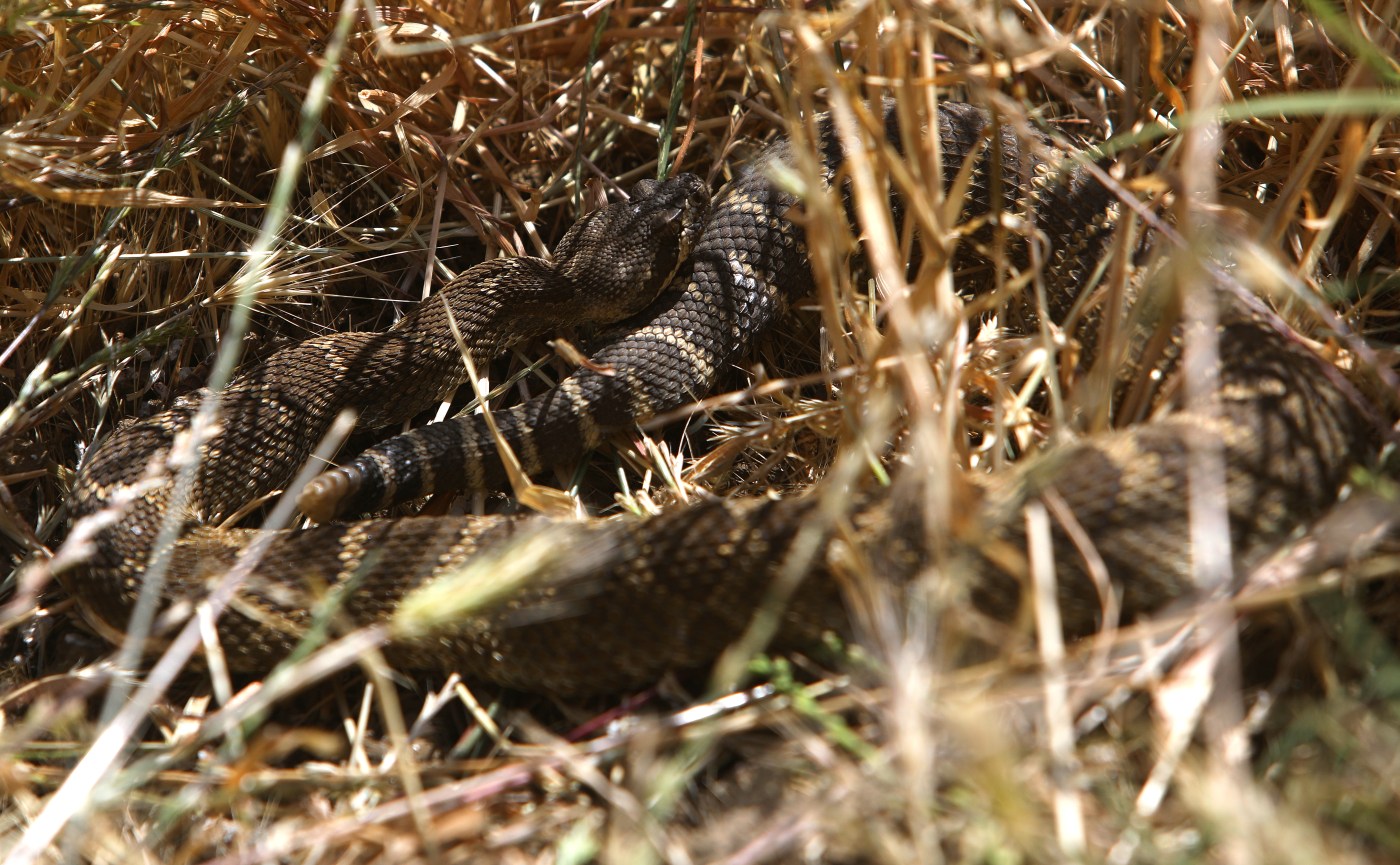DEAR JOAN: A couple of years ago, I came across an unusual and relatively large rattlesnake in the Walnut Creek open space.
Its markings were a beautiful rosy color. I’ve seen a fair number of rattlers while hiking in the open space, but never one with those markings.
At the time, I thought it must be a variant of Pacific rattlesnake since that’s what I understood was the only species in this area, but recently in the East Bay Times, I saw an article on rattlesnakes that showed a picture of a red diamond rattler that looked remarkably like the one I saw. Its range, however, is restricted to the San Diego area.
Is there any way one would have wound up here or was it, in fact, a variation of the Pacific rattlesnake?
— Joel Grube, Berkeley
DEAR JOEL: Both of those theories are possible. The red diamond lives a long way from the Bay Area, although it might have hitched a ride north. There’s always a chance someone kidnapped the snake, transported it here and then, realizing what a huge mistake they had made, compounded the error by releasing it into the open space.
I think it’s just as likely that it was a case of mistaken identity. The Bay Area is home to a number of snake species. The Pacific rattlesnake is the only one that is venomous and therefore gets the most attention.
The Pacific rattlesnake can have a few different colorations including reddish brown. It probably was what you saw. Or it might have been a gopher snake, which often is mistaken for a rattler. They can have a reddish, rusty hue on their backs and head.
As we venture out to regional parks, open space and our own backyards, remember that snakes, too, are coming out to soak up the sun. Watch where you step. The Pacific rattlesnake, while deadly, is also a shy animal and usually slithers away, but you don’t want to startle it.
DEAR JOAN: Because of the mosquito problem in Santa Clara County, we have been advised not to have any standing water outside. This includes bird baths.
Now I’m wondering where my birds, who were always drinking from the two bird baths I have, will get their water from. Are they in danger?
— Charlene, San Jose
DEAR CHARLENE: It is important to get rid of standing water, but there are some workarounds for bird baths.
Mosquitoes can’t lay eggs in moving water, so you can add a burbler or agitator to your bird bath to keep the water moving, or install a small fountain in the bath. You also can use mosquito dunks, which are safe for birds, that contain the larvicide BTI.
Related Articles
A unique Bay Area wildlife refuge is beginning to thrive again — but its most fascinating endangered species is still in peril
Yes, California has cicadas. Here’s what they’re up to in this bumper year.
Watch live: Peregrine falcon webcam up and running on Alcatraz Island
White orca Frosty, now 4, spotted off California with transient pod CA216
A Yellowstone visitor kicked a bison, and that did not end well, rangers say
If those methods don’t appeal to you, there’s always the option of regularly emptying and cleaning the bird bath to keep it mosquito-free.
Right now, the birds aren’t in dire need, as there is plenty of water in nature, but if we have a long hot summer, they could struggle
Helping hand
It’s kitten season, and many animal rescue groups and individuals who do “Trap, Neuter and Return,” are up to their ears in sweet kitten fluff. If you’ve been thinking about making a donation to your favorite group to help with expenses, now would be an excellent time to do it.
Animal Life runs on Mondays. Reach Joan Morris at AskJoanMorris@gmail.com.












